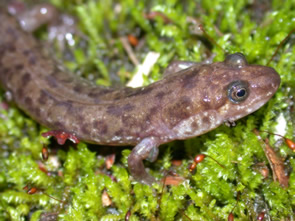
Desmognathus monticola
Photo by JD Willson
Description: The seal salamander is a fairly robust species that ranges in color from tan to dark brown. The patterning of the back is highly variable and may range from well-defined light spots to a dark splotchy or net-like pattern. The belly is light and unmottled with little or no flecking. Larvae and juveniles tend to be more boldly patterned with well-defined pairs of spots down the back.
Habitat/Range: In North Carolina, seal salamanders are commonly found in small, cold mountain streams that flow through hardwood forests. Seal salamanders are locally abundant in many areas of suitable habitat across their geographic range.
Diet: Seal salamanders primarily comsume small aquatic and terrestrial invertebrates. Larger individuals will consume larger prey items. Seal salamanders will occasionally consume smaller salamanders.
Reproduction: Females typically lay eggs in or around running water and guard them until hatching. Young seal salamanders overwinter as larvae and metamorph into adults during the spring. Larval seal salamanders have external gills are fully aquatic while metamorphosed individuals tend to occupy the stream margins and move between aquatic and terrestrial habitat.
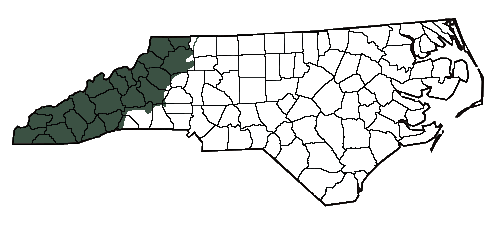
The shaded region represents the range of the seal salamander in North Carolina.
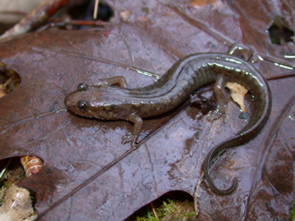
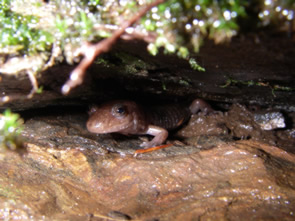
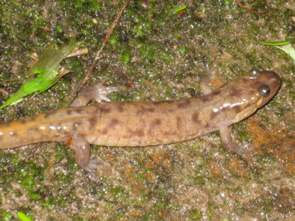
Photo by Kristen Cecala
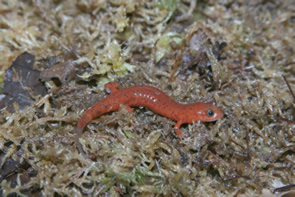
-gmc-7-12-2008-GSMNP.jpg)
A seal salamander with bright reddish-orange coloration.
Photo by Jeff Hall
Photo by Grant Connette
